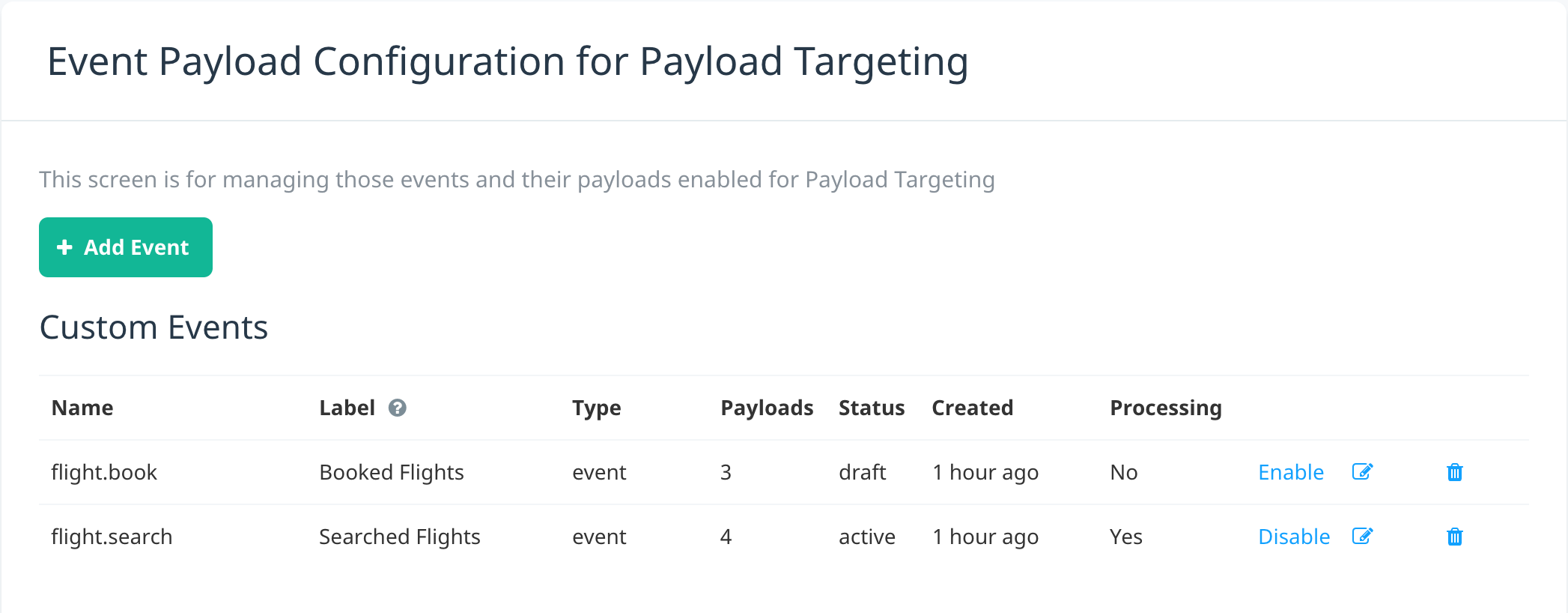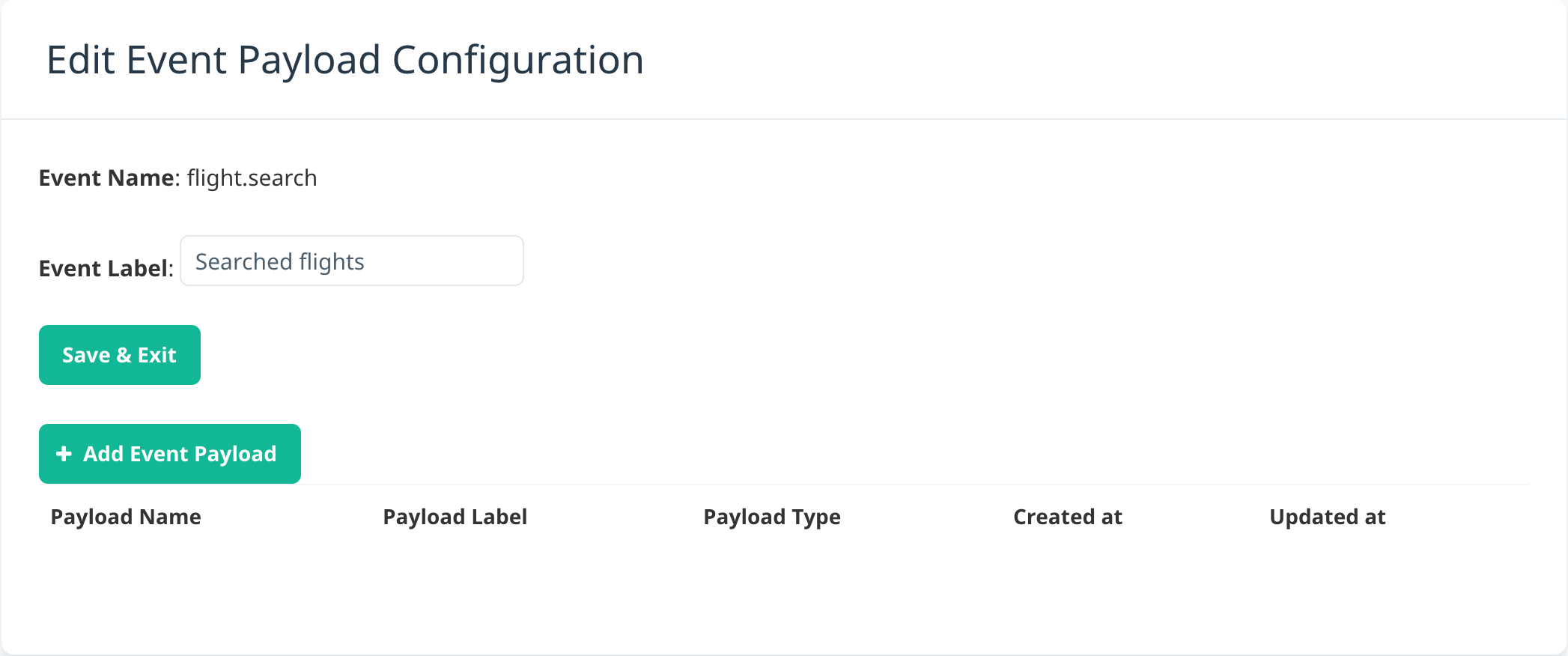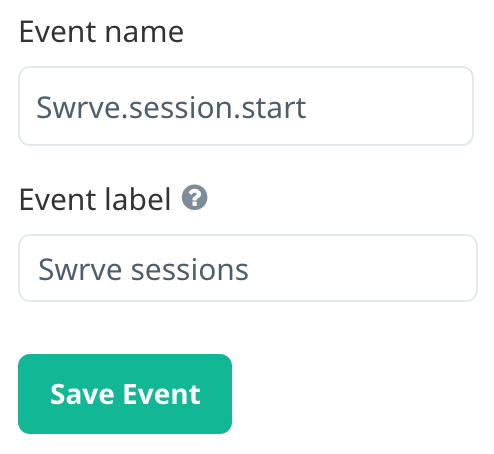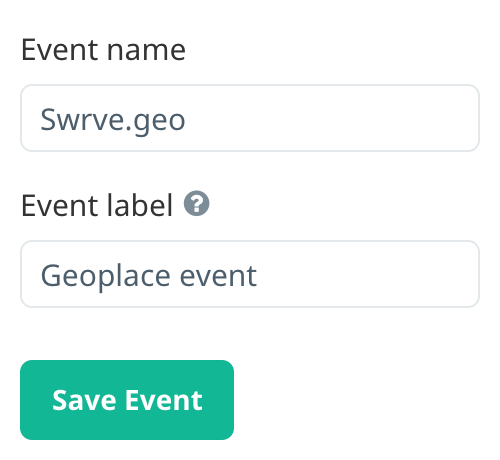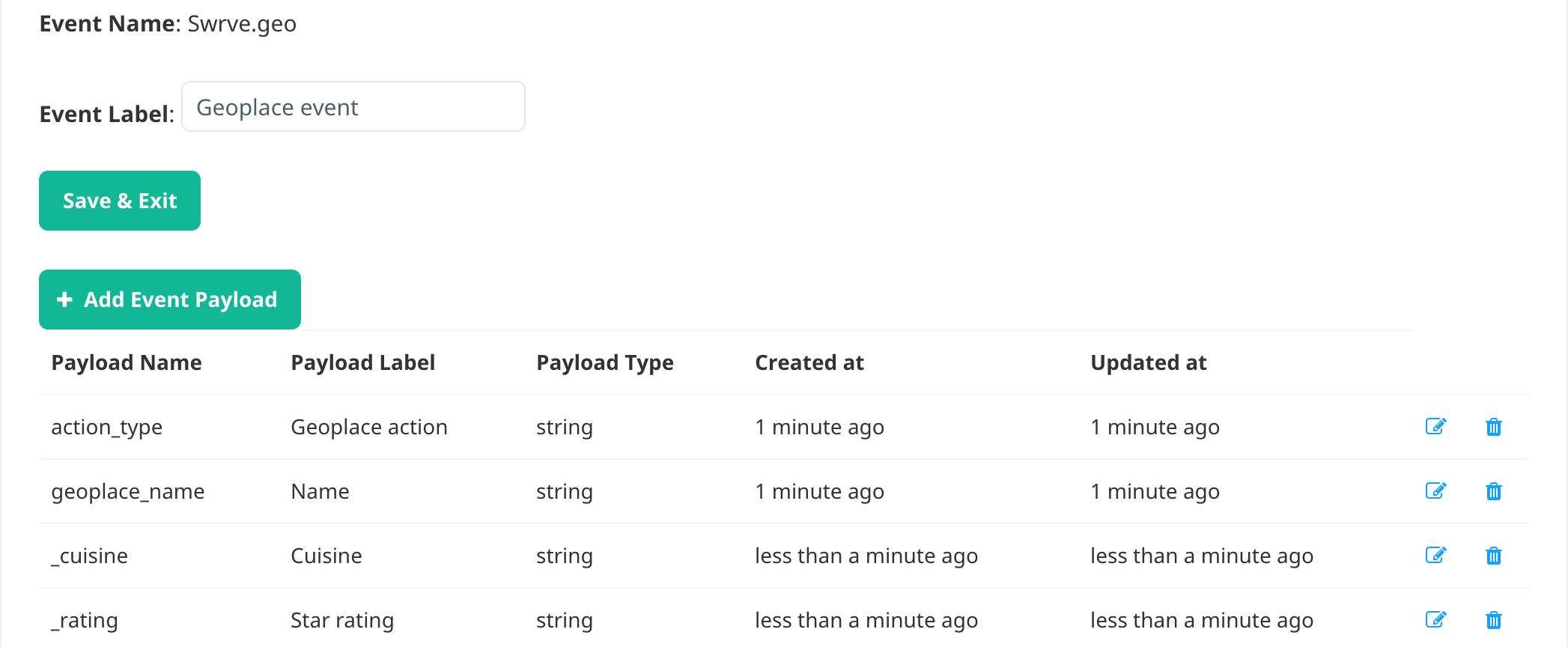Configuring event payloads
To properly capture the fine granularity of your target audience using payload targeting, you must first configure the events and payloads you want to use for targeting purposes. This article explains how to configure event payloads for audience targeting in your Swrve dashboard. If you need further assistance, contact your CSM at support@swrve.com. They will work with you to define the best schema for the events and payloads you want to use to target your users.
Prerequisites
To access Event Payload Configuration, you must have Manage permissions enabled in the App Admin activity group for your Swrve user role. For more information, see Managing Swrve user roles and permissions.
Custom events and payloads
Work with your development team to implement the custom events and payload values you want to use for targeting purposes. You can use a maximum of 10 events for payload targeting purposes, with a maximum of 20 payloads per event. Some flexibility is available if you need to use more than the maximum events or payload, contact your CSM at support@swrve.com if required. For information on configuring custom events and payloads, see the related integration guide:
Date-type payloads
Our payload targeting system supports date filters, however you must specify the payload type as Date and make sure the payloads use ISO8601 format: YYYY-MM-DDTHH:MM:SS.000Z. For more information on how to implement custom DateTime user properties in your app, see the related integration guide:
Managing payload targeting events
To view and manage your app events that have been configured for payload targeting, on the Manage menu, select Event payload configuration.
Use the options available to configure a new event, enable or disable an event, edit the configuration of an event, or delete an event configuration. The Event Payload Configuration screen also displays the following details for each configured event:
| Column | Description |
|---|---|
| Name | The event name, as implemented in your app. |
| Label | A user-friendly label for the event, as it will appear in the User Behaviors section of the campaign audience builder. |
| Type | The type of event, mainly a generic event that targets payload values, or a session_start event that targets recent session frequency. |
| Num. of Payloads | The number of payloads configured for the event. |
| Status | The current status of the event – draft or active. |
| Created at | How long ago the event was configured for payload targeting. |
| Processing | The current state of historical event processing. |
Configuring event payloads
Complete the following steps to configure event payloads for your app:
Select events for configuration
- On the Event Payload Configuration screen, select Add Event.
- On the Configure Event for Payload Targeting screen, add the event you want to use for payload targeting:
- Event name – select this box to display a list of your app’s custom events that Swrve has recently logged and then select or manually enter the event you want to use. For example, flight.search.
- Event label – enter a user-friendly label for the event as it will appear in the User Behaviors section of the campaign audience builder. For example, Searched flights.
- To save the event and display the payload configuration screen, select Save Event.
Add event payloads
- To add a payload to your event, select Add Event Payload.

- To display a list of payloads logged against the selected event, select the Payload name box, and then select the payload you want to configure. Once selected, a table appears displaying the values and counts that Swrve has received in the last 12 hours for that particular payload.

- In the Payload label box, enter a user-friendly label for the payload as it will appear in the User Behaviors section of the campaign audience builder.
- Select the Payload type – string, integer, date, or float. Use the table of payload values to help you to decide what is the most appropriate type (usually string). The payload type determines the operators that are available for filters on this payload in the audience builder.
Note: The value of any Date payload type is a date/timestamp in ISO8601 format in UTC: YYYY-MM-DDTHH:MM:SS.000Z. This is the same format used for date-typed user properties. - To add the payload to the event configuration, select Save Payload. To add additional payloads, complete steps 1 to 4 above as required.
- Once you’ve added the desired payloads, to save the event configuration, select Save & Exit.
Activate event to process payloads
- To activate an event for payload targeting, in the event row, select Enable.
- The Activate Event Payload Configuration screen displays details of all the payload values configured for the event. To confirm the activation, select Activate.
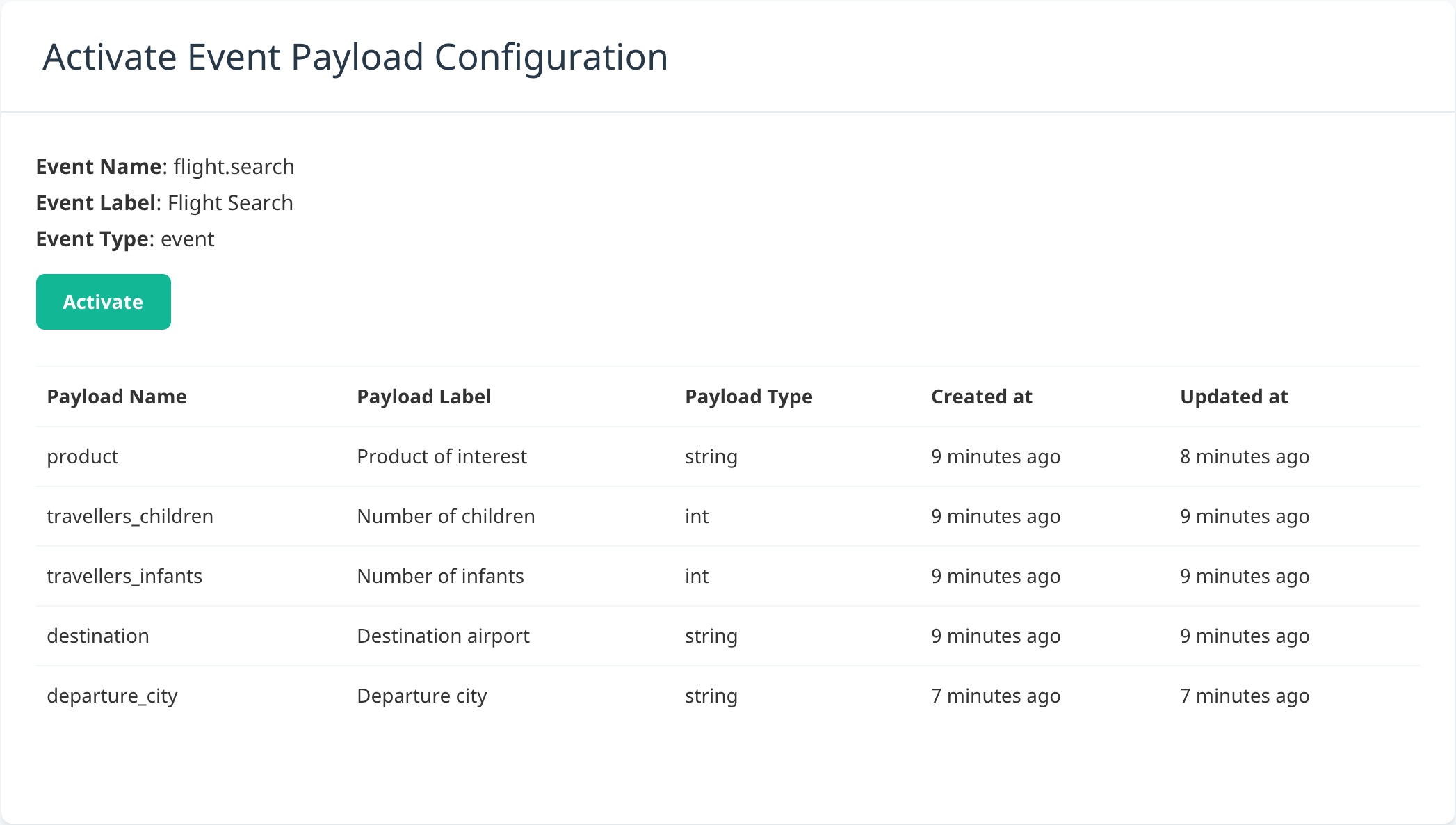
Once you activate the event payload configuration:
- Going forward, any new events and payload values matching this configuration that Swrve logs are streamed into the payload targeting system and available for audience filtering.
- The Processing status changes to Aggregating Historical Data and Swrve starts reprocessing all historical data for the app to find any earlier events and payload values matching the configuration. Once the events are reprocessed they are also available for targeting and filtering audiences. Depending on the app size, it may take several hours to process the volume of data. When the Processing status is Up to date, all event payloads are available for targeting in the campaign audience builder.
Targeting session recency
If you want to target the recent frequency of sessions, for example, “users with at least five sessions in the last 30 days”, in the Event name box, use the Swrve.session.start event.
You do not need to include any payloads. To make the session start event available for audience targeting, save and activate the event as described above.
Targeting geoplace activity
If you have geo-triggered campaigns enabled in Swrve, use the Swrve.geo event to target users based on their geoplace activity.
First, on the Event Payload Configuration screen, add a new event called Swrve.geo.
Next, add the following two payloads to the event: action_type and geoplace_name. Ensure you use this exact naming structure. Optionally, if you want to use the values of your geoplace custom properties for targeting purposes, add a payload for each property, using the same naming convention you used on the Geoplace Settings screen.
Select Save & Exit and then enable and activate the event payload configuration. Once the historical data is finished processing, the geoplace actions and other payloads are available for targeting your campaigns, in the User Behavior Filters section of the audience builder.
Select the action you want to use to target users, such as enter or exit, and then further refine the target audience using the geoplace name or any other combination of custom geoplace properties. For a more detailed example of geoplace targeting, see Targeting your audience by geoplace activity.
Next steps
Learn how to use event payloads to fine-tune your target campaign audiences. For more information, see Targeting your audience by event payloads.
